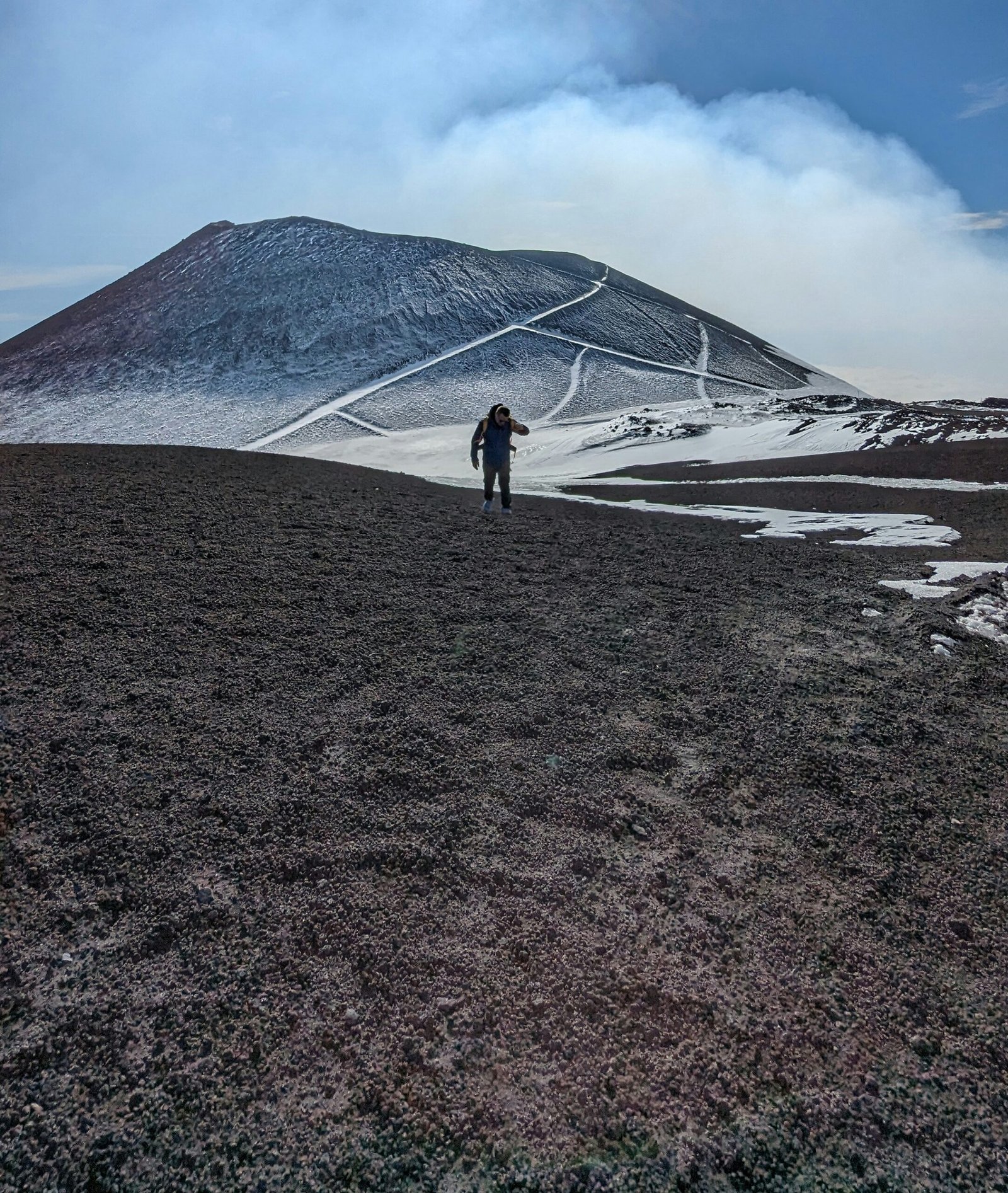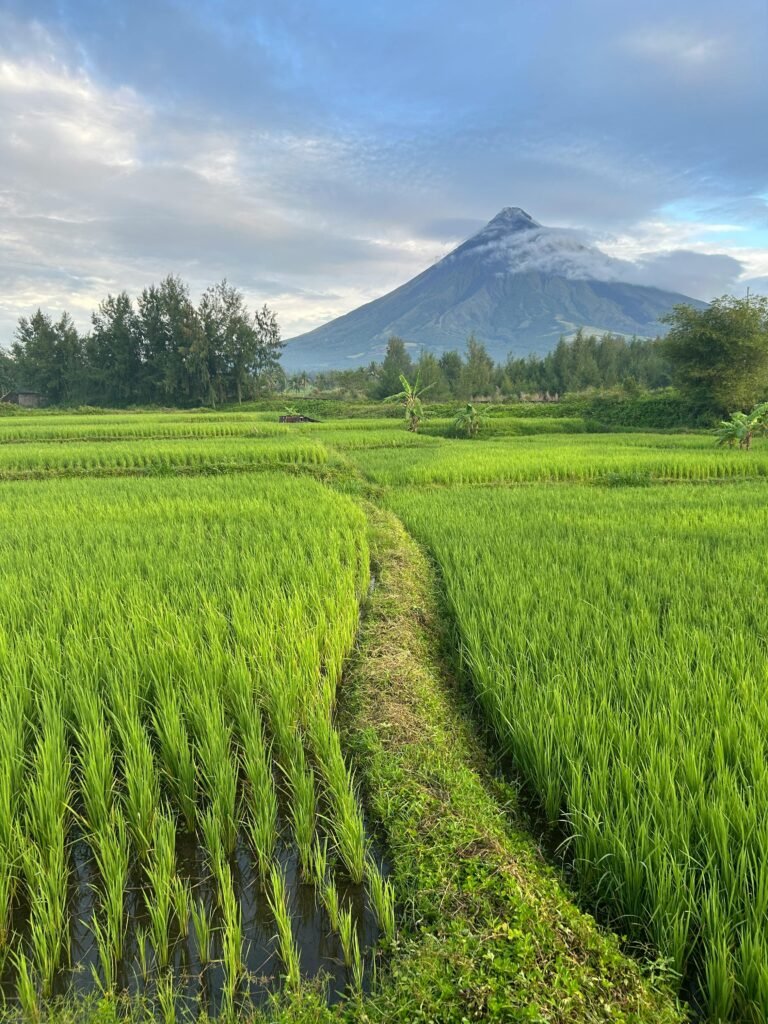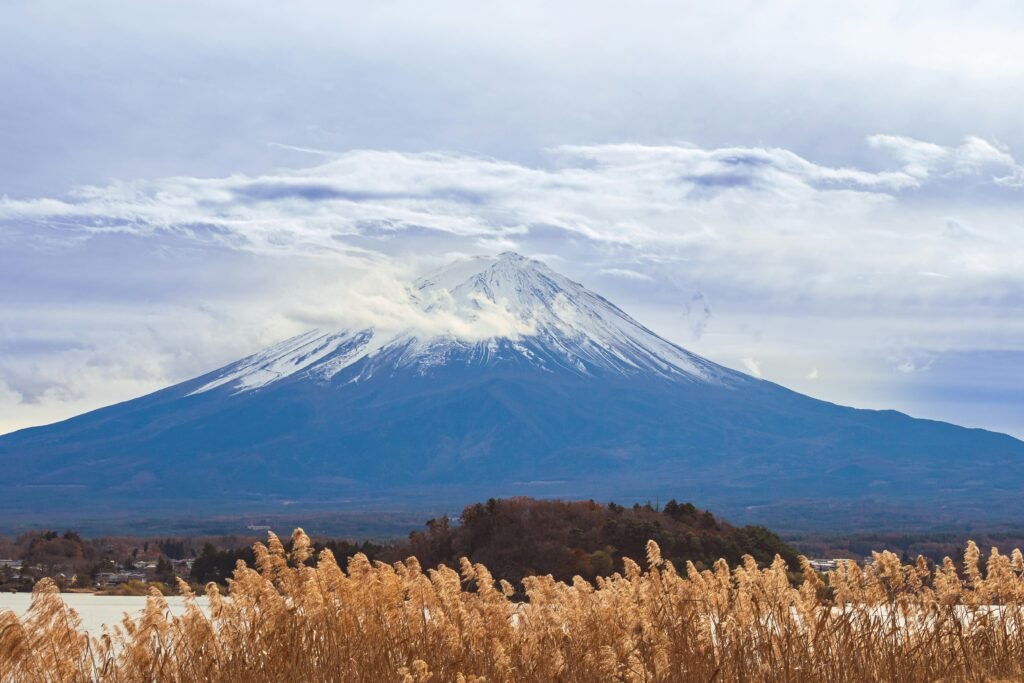Introduction to Volcanic Adventures
The thrill of exploring volcanic landscapes presents an adventurous opportunity unlike any other. With their dramatic topographies and unique geological formations, both active and dormant volcanoes offer intriguing adventures that appeal to thrill-seekers and nature enthusiasts alike. These awe-inspiring natural wonders are not only visually striking but also serve as essential indicators of the Earth’s dynamic processes. Each volcanic region has a distinct ecosystem shaped by its geological history, making these locations fascinating subjects for exploration.

Volcanic adventures typically involve trekking through rugged terrains, navigating lava fields, and observing various geological features such as craters, fumaroles, and hot springs. The exhilaration of standing at the edge of a bubbling caldera or witnessing the steam rising from volcanic vents adds a layer of adrenaline to the experience. These excursions allow individuals to connect deeply with nature and witness firsthand the raw power of our planet. Furthermore, the biodiversity often found in these areas is remarkable, showcasing plant and animal species uniquely adapted to the volcanic environment.
Additionally, adventurers can delve into the cultural significance that many of these volcanoes hold for local communities. Various cultures have infused their histories with myths and rituals surrounding these geological giants. Understanding the stories behind these significant sites enhances the experience, allowing visitors to appreciate both the natural beauty and the cultural context. Adventure seekers are often drawn to these locations not only for the physical challenge they present but also for the profound sense of discovery that comes with exploring the Earth’s powerful forces.
Iceland: The Land of Fire and Ice
Iceland is a unique destination well-known for its dramatic landscapes shaped by volcanic activity and geothermal phenomena. The island’s geological features, including geysers, hot springs, and a number of prominent volcanoes, make it a premier location for adventurous souls seeking volcanic experiences. Among the notable volcanoes are Hekla, often referred to as “The Gateway to Hell,” and Eyjafjallajökull, which gained global attention during its 2010 eruption that disrupted air travel across Europe.
Hekla is one of the most active volcanoes in the country, with eruptions occurring approximately every 10 years. Hikers are drawn to its challenging terrain, and the panoramic views from its summit are known to be breathtaking. Eyjafjallajökull, on the other hand, while historically significant due to its recent eruption, offers fascinating scenery, including glacial landscapes and volcanic craters. Both volcanoes provide a backdrop for various hiking routes, with the Laugavegur Trail being one of the most popular treks in Iceland. This trail spans approximately 55 kilometers and showcases an array of geothermal features, colorful mountains, and stunning valleys.
The best times to visit Iceland for volcanic exploration are during the summer months, particularly between June and August, when the weather is milder, and trails are more accessible. Additionally, these months allow visitors to experience the midnight sun, extending the hours of exploration available. For those interested in hiking and witnessing volcanoes in their natural habitat, early autumn can also be an excellent time as the fall colors add a unique touch to the landscape.
Iceland’s captivating combination of fire and ice, along with its unique geological features, solidifies its reputation as a must-visit destination for volcano enthusiasts. From the awe-inspiring eruptions to the serene beauty of its natural surroundings, Iceland continues to attract adventurers eager to experience the raw power of nature.
Indonesia: The Volcano Archipelago
Indonesia, known for its stunning landscapes and rich biodiversity, is home to over 130 active volcanoes, making it a premier destination for volcanic adventures. This archipelago, which consists of more than 17,000 islands, provides a diverse range of trekking routes and experiences for those eager to explore its geological wonders. Two of the most notable volcanoes are Mount Rinjani and Mount Merapi, each offering unique challenges and breathtaking views for adventurers.
Mount Rinjani, located on the island of Lombok, is the second-highest volcano in Indonesia. Its majestic stature and the emerald-green crater lake, Segara Anak, attract trekkers from across the globe. The trek to the summit, which is approximately 3,726 meters high, is both challenging and rewarding, with panoramic vistas that showcase the island’s natural beauty. Local guides are available to provide insights into the area’s cultural heritage, including traditional ceremonies performed at the base of the volcano. As one climbs higher, hikers may also encounter lush forests and endemic wildlife, enhancing the ecological experience of their journey.
On the other hand, Mount Merapi, situated near Yogyakarta, is one of Indonesia’s most active volcanoes, with several significant eruptions recorded in recent years. This volcano offers shorter trekking options, allowing visitors to witness its powerful presence without committing to a lengthy hike. The trails around Mount Merapi are rich in history, providing glimpses into local communities that have adapted to the volcano’s activity. Additionally, the surrounding landscapes are dotted with remnants of lava flows and fertile agricultural land, highlighting the diverse life that thrives in areas shaped by volcanic activity.
Both Mount Rinjani and Mount Merapi exemplify the allure of Indonesia’s volcanism, attracting enthusiasts who seek to experience not just the thrill of trekking but also the vibrant culture and stunning natural beauty surrounding these incredible geological formations.
Central America: A Volcanic Playground
Central America serves as a remarkable destination for those seeking volcanic adventures, featuring a plethora of stunning and accessible volcanoes. This region is enriched with geological wonders, drawing both tourists and researchers from around the globe. Notably, Nicaragua and Costa Rica are home to some of the most iconic volcanoes that offer thrilling hiking experiences and picturesque natural surroundings.
In Nicaragua, the Mombacho Volcano stands out not only for its height but also for its lush biodiversity. Hiking trails are abundant, offering trekkers the opportunity to explore various ecosystems, from dry forests to cloud forests. The sight of the crater lake at the summit is particularly breathtaking, as visitors can enjoy panoramic views of the surrounding area. Moreover, the region’s rich volcanic soil contributes to a thriving coffee-growing industry, further accentuating its appeal to nature enthusiasts.
Another notable Nicaraguan volcano is Masaya, renowned for its active crater, which allows visitors to witness volcanic activity up close. The Masaya Volcano National Park provides several hiking trails, some of which lead to viewpoints where travelers can observe the glowing lava, especially mesmerizing at dusk. This unique experience showcases the dynamic nature of Central America’s geology and environmental diversity.
Crossing into Costa Rica, the Arenal Volcano is a must-visit. Recognized as one of the country’s most recognizable landmarks, Arenal features various hiking routes suitable for different skill levels. The lush surroundings, characterized by tropical rainforests, complement its majestic silhouette. Hikers can expect to encounter a rich array of wildlife, including monkeys and exotic birds. The nearby hot springs also provide a perfect way to relax after a day on the trails.
Lastly, Rincon de la Vieja is another gem featured in Costa Rica, known for its geothermal activity and diverse ecosystems. Adventures here range from relaxing in thermal pools to exploring volcanic mud pots and fumaroles. The combination of dramatic landscapes and diverse flora and fauna makes this area a hotspot for adventure seekers. Overall, Central America’s volcanic playground is an unparalleled region for nature lovers and adventure enthusiasts alike, offering once-in-a-lifetime experiences.
Safety Precautions When Exploring Volcanoes
Exploring volcanoes presents unique experiences filled with awe-inspiring views and geological wonders, but it is essential to prioritize safety to minimize risks associated with volcanic activity. Understanding the dynamics of volcanoes is paramount for any adventurer planning a visit. One of the first steps is to assess volcanic activity by checking alerts from local geological services, which monitor eruptions and seismic activity. Most regions prone to volcanism will have established monitoring systems that provide real-time updates. Adventurers would benefit from familiarizing themselves with the active volcanoes in their chosen destinations before embarking on the expedition.

Equally important is adherence to local guidelines and regulations. Authorities often set safe zones around volcanoes, and these guidelines are established to protect visitors from potential hazards. Ignoring these recommendations can lead to serious injury or worse. Always respect closed areas, and consider attending guided tours organized by experienced operators who possess in-depth knowledge of the volcanoes. These professionals can provide valuable insights into the local environment while ensuring safety protocols are followed.
Preparing the proper gear is another critical aspect of a safe volcanic adventure. Essential hiking equipment includes sturdy hiking boots, breathable clothing, a reliable map of the area, and plenty of water. A first aid kit is advisable, as it can serve as a precautionary measure for minor injuries. If exploring areas with potentially toxic gases, such as sulfur dioxide, carrying a gas mask or respirator can provide additional safety. Having a group or a partner while hiking is also beneficial, enhancing security and allowing for immediate assistance if needed.
In conclusion, exploring volcanic destinations can unleash a sense of wonder, but preparation and safety consciousness are vital to ensure a gratifying and secure adventure.
Guided Tours and Adventures: Pros and Cons
When planning a volcanic adventure, travelers often face the decision of whether to embark on guided tours or explore independently. Each option presents its own set of benefits and challenges that can significantly impact the exploration experience. Guided tours typically offer several advantages, chief among them being local knowledge. Experienced guides possess extensive understanding of the terrain, geological features, and safety protocols, which can enhance the exploration of active volcanoes. Their expertise not only enriches the experience with engaging insights but also ensures that travelers remain safe in unpredictable environments, reducing risks associated with volcanic activity.
Additionally, guided tours often provide necessary equipment and transportation, streamlining the logistics of the adventure. For those less familiar with hiking or outdoor activities, this structured approach allows for a more comfortable experience. Furthermore, the camaraderie fostered within a group can lead to shared experiences and vibrant social interactions. Travelers have the opportunity to meet like-minded individuals, which can contribute to a richer overall adventure.
On the other hand, there are notable drawbacks to consider. Group dynamics can limit the freedom to explore at one’s own pace, potentially curbing the spontaneity that some travelers crave. Participants might find themselves adhering to a rigid itinerary, missing out on unique opportunities for exploration that may arise along the way. Moreover, the camaraderie aspect may not appeal to everyone; some may feel constrained by the presence of others or the need to accommodate the group’s preferences and schedules.
Ultimately, the decision to choose guided tours for volcanic adventures hinges on the traveler’s personal preferences and expectations. Considering the advantages and disadvantages is essential to ensure the experience aligns with one’s intended adventure goals.
Photography Tips: Capturing Volcanic Landscapes
Capturing the breathtaking beauty of volcanic landscapes requires a blend of technical proficiency and creative vision. To ensure you’re ready for this striking subject matter, it is essential to employ specific techniques that emphasize the contours and colors unique to volcanic regions. Lighting plays a pivotal role; the golden hours—shortly after sunrise and just before sunset—offer soft, diffused light that accentuates the textures and colors in these rugged terrains. Photographing during these times can enhance the dramatic features of volcanic rocks and fumaroles.

Moreover, considering the angle from which you capture your shots can significantly alter the perception of the landscape. Low angles can impose a sense of grandeur and depth, drawing attention to the imposing volcanoes themselves. Alternatively, high perspectives can provide a broader view, capturing the vastness of the surrounding landscape. Experimenting with various angles can yield a diverse portfolio of images that showcase the volcano’s essence. Additionally, incorporating foreground elements such as nearby flora or lava formations can enhance the composition, leading to more engaging photographs.
Regarding equipment, a sturdy tripod is invaluable for long exposure shots, particularly when capturing the subtle details in low light. Using a wide-angle lens often proves beneficial, allowing for immersive vistas that highlight the enormity of volcanic structures. It is also advisable to carry lens filters to manage reflections or adjust color saturation, which can help convey mood and vibrancy in your images. In colder or harsher environments, weather-sealed gear will ensure consistent performance and durability. Overall, understanding these techniques can elevate your volcanic photography, creating images that resonate with viewers and capture the wild beauty of these natural wonders.
Incorporating Local Culture and Experiences
Volcanic destinations offer not only stunning geological features, but also rich cultural experiences that can greatly enhance any adventure. Engaging with local customs, cuisine, and communities allows visitors to gain a deeper understanding of the environment in which they are traveling. These interactions can provide invaluable insights into the history, traditions, and lifestyles shaped by volcanic activity.
One of the most effective ways to experience local culture is through culinary exploration. Many volcanic regions boast unique dishes influenced by the local landscape. For instance, in the vicinity of Mount Etna in Italy, visitors can savor traditional Sicilian cuisine, including food items that utilize the fertile volcanic soil. Exploring local markets can also introduce travelers to indigenous ingredients and dishes, creating opportunities to connect with the community and respect their culinary heritage.
In addition to food, participating in cultural festivals can be an invigorating aspect of these adventures. Many volcanic areas celebrate annual events that commemorate their geological heritage. For example, the island of Santorini in Greece hosts various festivals where locals share traditional music, dances, and art forms that reflect their storied past. Embracing these experiences enables travelers to build meaningful connections with the people and their customs, fostering a sense of community.
Moreover, engaging in community-based tourism initiatives can further enhance one’s volcanic adventure. Many local organizations offer guided tours led by residents, which provide an authentic perspective on the region’s culture while supporting local economies. These tours often include visits to artisan workshops or cultural centers, enriching visitors’ understanding of local craftsmanship and its significance in the context of volcanic landscapes.

Conclusion: The Ongoing Allure of Volcanoes
The fascination with volcanoes spans across cultures and centuries, captivating the hearts and minds of adventurers and scientists alike. These natural wonders not only represent geological phenomena but also embody the raw beauty and immense power of our planet. The allure of volcanoes lies in their diverse landscapes, rich ecosystems, and the unique experiences they offer. From the fiery eruptions of Mount Etna to the serene calderas of Mount Fuji, each volcanic site presents its own narrative and exploration opportunities.
Volcanic adventures are distinguished by their ability to combine excitement with education, allowing visitors to witness firsthand the forces that shape our Earth. Whether hiking along volcanic trails, soaking in mineral-rich hot springs, or engaging with local cultures that thrive in the shadow of these giants, each adventure provides a profound connection to nature. The thrill of standing near a crater or observing active lava flows is matched only by the understanding of the surrounding ecosystem and its delicate balance.
As more travelers seek to indulge in these incredible experiences, it becomes crucial to emphasize the importance of respecting nature and preserving these magnificent sites for future generations. Conservation efforts are paramount to maintaining the ecological integrity of volcanic landscapes, ensuring that their beauty is both celebrated and protected. Therefore, while planning your own volcanic adventure, consider the environmental impact of your visit and choose sustainable practices that promote the well-being of these extraordinary regions.
In reflecting on the ongoing allure of volcanoes, it is evident that they continue to inspire wonder and adventure. The combination of natural beauty, geological intrigue, and cultural significance makes them a must-visit for those seeking unique experiences. As you embark on your journey to explore these breathtaking destinations, remember to embrace the beauty of nature while taking mindfulness of the importance of environmental preservation.









